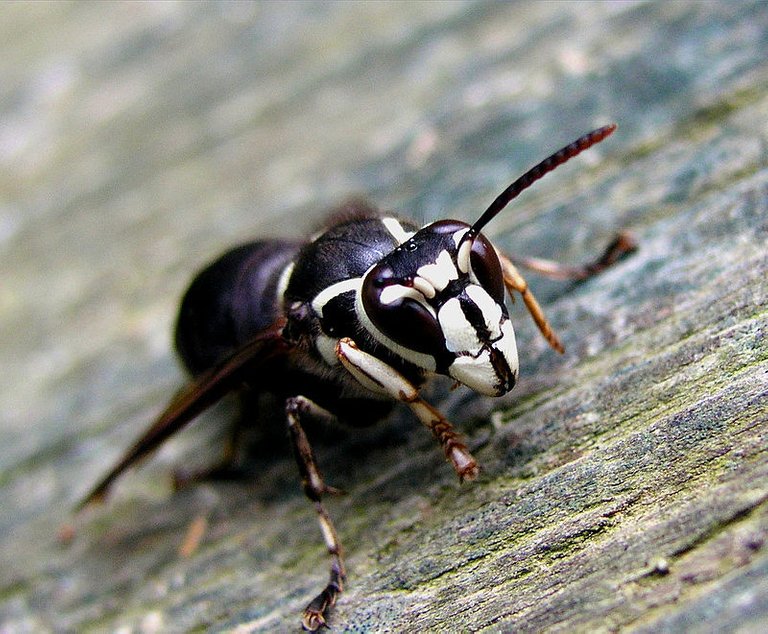They're big, bold, brassy and create a big old buzz wherever they go. What is it about the all-American hornet that puts a bee in peoples' bonnets.
Hornets are the largest members of the wasp family, and they get a lot of bad press. The presence of a hornet usually incites panic, but they sting a lot fewer people than the common wasp.
They are primarily predators of other insects, and are less of a nuisance than their more irritating relatives.
In Eastern European countries, the hornet has become almost extinct because they are perceived as dangerous pests. Hornets are not native to America, but one species has made the Unites States its home.
The Bald-Faced Hornet
The bald-faced hornet belongs to a group of wasps called the yellow jackets. The British don’t class it as a “true hornet” because it is not a member of the same family as the Asian giant or European hornet.
In America, it is classed as hornet because it is a wasp that builds paper nests. These hornets are most common in North America.
Appearance
Bald-faced hornets are smaller than their tropical counterparts. Their growth is affected by living in a habitat which is not conducive to maximizing the development of their full potential.
Although part of the yellow-jacket family, bald-faced hornets lack the distinctive yellow coloring. They are called bald-faced hornets because of their largely black color, but mostly white face.
The Sting
Hornets are surprisingly peaceful and shy insects whose natural instinct is to avoid conflict. The hornet’s sting is no more deadly than that of a bee or wasp, but it’s large size and distinctive noise leads people to consider it a troublesome pest.
The bald-faced hornet will only sting if it is provoked. When it is injured it will release an alarm pheromone which alerts other members of its colony who will quickly rush to the wounded hornet’s aid.
The Hive
Bald-faced hornets are social insects, and the nest is composed of a caste system of queen, drones and workers. Each has designated roles and responsibilities.
The nests have a distinctive football shape and are made of paper. The queen is the biggest of all hornets and starts the nest early in the spring. She is the mother of all the hornets and her only function is to keep on producing the eggs.
Workers protect the hive and provide food, as do drones, who also tend to the overall construction of the nest.
Bald-faced hornets are fiercely protective of their nest and will sing repeatedly if it is disturbed.
When winter arrives the entire colony dies, with the exception of any newly-fertilized queens.
The nests are left to rot by the queens of the next generation, who hibernate underground. Come the spring, the newly crowned queens will emerge like freshly sprung flowers to begin the cycle anew.
Source:
Eric Grissell, Bees, Wasps, and Ants
